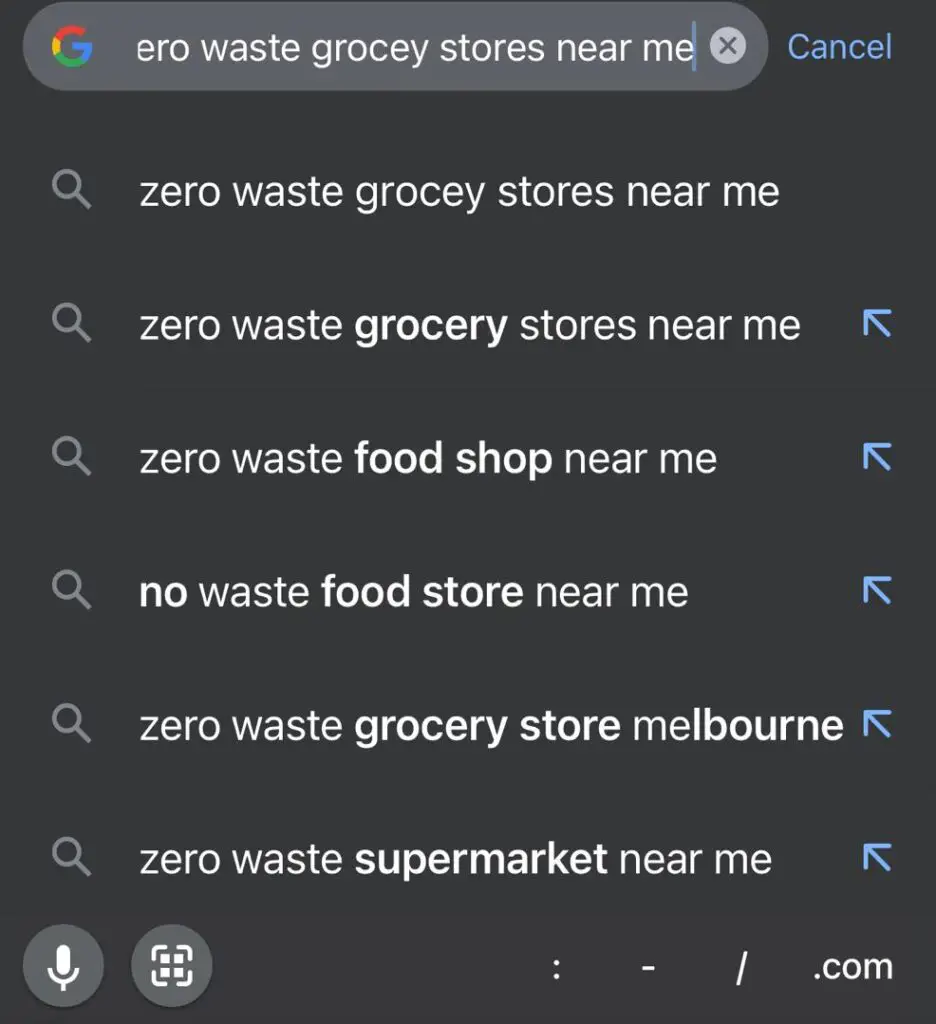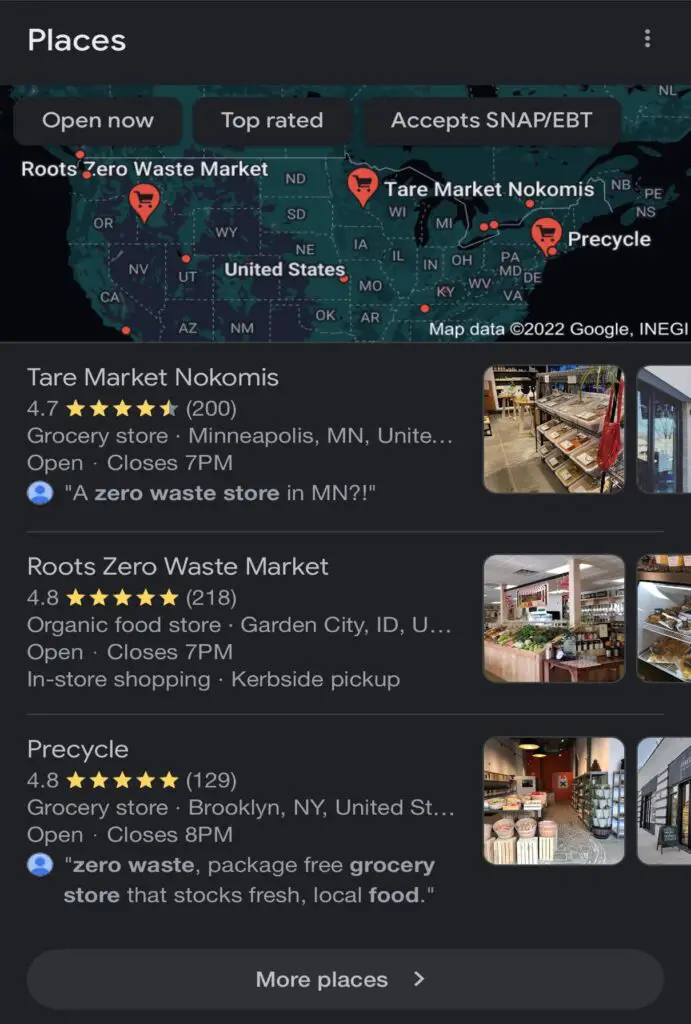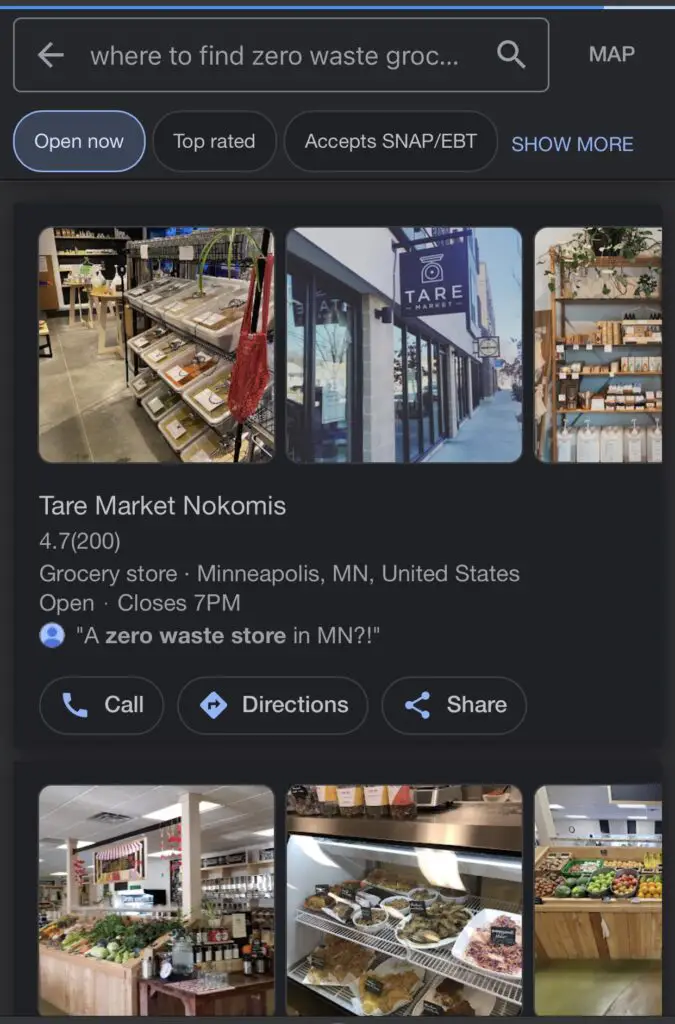As people with concrete intelligence and care for our ecosystem, we can not help but take serious measures to make sure we play our parts or roles towards having a clean environment free from plastic waste, gaseous waste, or any form of waste that degrades the environment.
This is why more and more retailers are going for the zero waste alternative so as to minimize waste and ensure that environmental damage can be reduced.
However, stores with these policies can be considered relatively new, but their efforts to show that physical stores can still be eco-friendly cannot be overlooked and are worthy of commendation.
Through enabling customers to harbor more zero-waste life patterns by removing packaging and accepting the use of containers from home for filling and refilling commodities like food, cleaning products, and the rest, these stores have made a great impact.
You might wonder where you can find zero-waste stores around you, probably because you’re an eco-friendly person or you just fancy using your own containers. Here’s assuring you that you’re at the right place as we’ll be giving you pictorial guides as to how you can find zero waste grocery stores near you.
- With your mobile phone, enter the Google search app, then write the search words “zero waste grocery stores near me”. just as it is in the photo below.

- Now, after searching, wait for the search results to arrive, then tap on more places.

- After tapping for more places, kindly locate the nearest store around you, then tap on direction. You’ll get the accurate direction from where you are to the shop.

How can I buy groceries without wasting any?
There are plenty of things you can do as an eco-friendly person even if your grocery store isn’t a zero-waste prioritized grocery store.
Kindly follow these steps to have a waste-free grocery store.
Before you go out for grocery shopping, ensure you have enough of your own bags and jars/containers to carry enough of what you want to buy.
- When you arrive at the grocery store, go to the customer service and get the tare weight, which is also the empty weight of your containers. Although most grocery stores that have bulk sections will weigh your containers for you, if the employee doesn’t quite understand you, simply explain what you want to them. It is also important that you mark the tare weight below the containers.
After you fill up your container with a bulk item, you can now snap the label on the bulk bin with your phone. By doing this, you can evade printing stickers for them, which would have been dumped when you’re home.
- Go for either glass, paper, or metal for your preferred food packaging options over plastic. This is because it’s easy to recycle options like metal compared to plastic. Even paper has a very good recycling rate and is a better option than plastic. If somehow you don’t have a bulk bin, you should go for canned variations of foods.
- Get a very big container: when you get a good enough container to properly contain your goods, you won’t have to package them much. The container will harbor things like liquid detergent, vinegar, and even hand soap. You can fill them with small bottles from the containers when you get home.
- Make your purchases of food more plant-based; by doing this, you won’t have to worry about too much plastic packaging.
What are zero-waste stores?
Zero waste stores are eco-friendly stores. As the world around us becomes more aware of the dangers of plastic waste and the high level of damage it causes to the environment, zero waste grocery stores are emerging and taking the lead in changing the plastic narrative in their own efforts to reduce the amount of grocery-store produced plastic that exceeds 14 million tons each year.
The idea is simple. Every single time you shop, what you don’t notice is all of those bags, all of that packaging used to package food, produce, and everything else you buy ends up in the landfill, which continues to degrade the earth. This is what zero waste grocery stores stand for, to take their own actions and limit plastic distribution from their own end.
It might also interest you to know that the very first zero-waste grocery store came up in Europe during the late 2000’s. The major thought pattern behind the movement was to replace plastic packaging with other commodities that could later be used for packaging.
Since the beginning of the zero waste movement, so many impacts have been made. The success achieved so far is quite visible and does not need a soothsayer to confirm that. The movement has encouraged big household grocery stores in the United States like Walmart and Kroger to reduce their use of plastic packaging.
Is it cheaper to shop for zero waste?
Well, the answer to this question is “No,” as the zero waste process initially is quite costly and it is not advised to do away with all your non-sustainable possessions to go completely zero waste. However, eventually the zero waste method begins to become cheap because you might have gotten everything required to completely go zero waste.
For example, before going for a zero waste option for a lotion, it’s necessary that you first finish that lotion before you move on to ask for the zero waste variation the next time you’ll be using it.
So, the main idea is to buy stuff you know can be reused to refill when you want to go zero waste for that particular commodity or product.
Let’s quickly look at some of the average costs of some low-budget zero-waste home supplies and their counterparts.
- Laundry detergent: The zero waste variation of the laundry detergent and the conventional laundry detergent are both the same in price at 20 cents per load.
- Shampoo: The zero waste variation of shampoo bars actually costs something like $10, while its conventional counterpart costs $7.43 for a bottle.
- Deodorant: a zero waste variation of deodorant costs $10, while its conventional counterpart costs from $4 to $10.
How can I make grocery shopping more environmentally friendly?
Anyone can decide to shop more environmentally friendly. It’s all about getting the right knowledge on how to go about it, which we’ll be dishing out in this article as we proceed. Stay with us.
- Shop local: when you shop far, the food from those stores has to be shipped either by a boat, plane, or even a truck, which adds to the increase in greenhouse gas emissions. But when you shop local, you can avoid all of that.
- Have reusable shopping packaging: by doing this, you won’t have to dispose of the plastic as you’ll be using it steadily for shopping.
- Buy fresh food: fresh foods are normally eco-friendly as they do not go through the same production method as other processed commodities.
- Buy in bulk: When you buy in bulk, you don’t have to use as much plastic packaging because everything can fit into one big plastic bag.
How do you pack food without plastic?
It’s possible to store without plastic and be more environmentally friendly. In this article, you’ll be exposed to different ways you can pack food without using plastic.
- With airtight glass containers
- reusable wraps that are not plastic.
- Silicone containers and bags
- Paper bags
- ‘Clothe food bags’
All of the above-mentioned means can be used as an alternative to plastic bags.
How do you store meat in the refrigerator without plastic?
Storing meat without plastic in the fridge might be worrisome if you have no idea about other alternatives, but not to worry, we’ve got you covered. Stay with us as we unveil ways you can store meat in your fridge without plastic.
- You can use ice cream tubs.
- Mason jars
- A silicone zip-lock bag
- Cellulose bag
- Stainless steel containers
All of these items can be stored without the use of plastic and will cause no problems.
How can we reduce garbage at home?
We can not deny how garbage affects not just our environment but our surroundings too, especially when it’s where we live. Hence, it is very important that we keep our place tidy and neat. Let’s quickly look at some of the ways we can reduce garbage at home.
- Get a reusable bottle or cup for beverages so you don’t have to dump plastic all around the house.
- Use reusable grocery bags at home that aren’t just for the sake of groceries. By doing this, you will limit the number of plastic bags at home.
- Always look for things that can be recycled. Do not purchase non-recyclable things all the time.
- Composting your garbage in your back yard is quite nice and easy and also serves as manure, leaving your home clean overall.
- Mostly, buy second-hand items and donate your used items.
What is the cheapest alternative to plastic?
The best alternative to plastic is simply hemp. Hemp remains the most sustainable and renewable natural material. However, hemp plastics may not really be as cheap as normal plastics because they’re just coming onto the market scene and they are yet to be legalized in some states and other countries.
